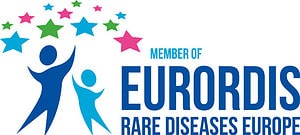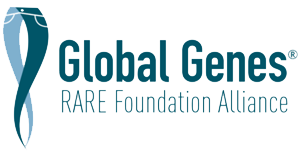
“Owen was our little fighter. Part of him still lives on through his little brother, Levi, who also suffers from Alpers Disease.”
– The Stump Family
General Info for Alpers Disease
Overview
Alpers disease is a rare mitochondrial condition where the protein that helps replicate and repair the mitochondrial DNA does not work as well as it should. Mitochondria are parts of a cell that help turn the energy we get from food into energy that the body can use. They are also important in the communication between body parts and in creating other materials the body needs.
Alternative Names
- Alpers’ disease
- Alpers Diffuse Degeneration of Cerebral Gray Matter with Hepatic Cirrhosis
- Alpers Progressive Infantile Poliodystrophy
- Diffuse Cerebral Degeneration in Infancy
- Poliodystrophia Cerebri Progressiva
- Progressive Cerebral Poliodystrophy
Quick Facts
- Alpers’ disease is a rare mitochondrial condition
- POLG is the most common genetic cause
- Found in 1: 51,000 to 1: 100,000 individuals in the world
- Both males and females can have Alpers’ disease
- Most individuals do not show symptoms at birth
- Around 80% of individuals develop symptoms in the first two years of life
- There is a cluster of three symptoms that make Alpers’ disease different from other mitochondrial disorders: cognitive decline and dementia, seizures, and liver disease.
- As of 2022 there is no FDA-approved therapy
Genetics
Affected Genes
POLG
Inheritance Type(s)
- Autosomal recessive
Cause and Genetics
Alpers disease is considered to have “multifactorial” causes which means it can be caused by many things. These causes can include genetic changes, metabolic factors (or differences in how someone breaks down food), prion-like molecules (proteins that can fold incorrectly and cause damage to the brain), and mitochondrial factors (or changes in part of the cell called the mitochondria).
The most common genetic cause of Alpers disease are changes to the gene POLG. People usually have two copies of the POLG gene, one inherited from each parent. Alpers disease occurs when there are changes in both copies of the POLG gene, also known as autosomal recessive inheritance. Someone who has a change in only one copy of the POLG gene is called a carrier, and they usually do not have any medical symptoms. If both parents are carriers, there is a one in four chance with each pregnancy that the child will have Alpers disease. Both males and females can have Alpers disease.
Frequency
Frequency (Global)
1:51,000 to 1: 100,000
Frequency - More Information
Some genetic changes in POLG are present in more people in certain countries, such as Norway, so the frequency can vary depending on ethnicity.
Affected Biological Gender
Both Male and Female
Signs and Symptoms of Alpers Disease
Alpers disease causes a range of signs and symptoms. These may differ greatly, even among members of the same family, so always check with your provider if new symptoms appear or you are concerned.
There is a cluster of three symptoms that make Alpers disease different from other mitochondrial disorders. These include:
- cognitive decline and dementia (which can include trouble with memory, slower thinking skills, loss of awareness and judgment)
- seizures (abnormal electrical activity in the brain)
- liver disease
Most individuals with Alpers disease do not show symptoms at birth and develop normally for weeks to years before they start to show symptoms. Around 80% of individuals develop symptoms in the first two years of life. The first symptoms seen are usually nonspecific, meaning something that doesn’t point to one specific cause. These may include seizures, stiffening of the legs and arms, involuntary jerking of the muscles, and blood sugar issues that signal the first signs of liver disease. In about 25% of cases, babies will have a loss of vision from damage to a specific part of the eye called the cortex. Gastrointestinal problems (problems in the stomach or intestines) and an enlarged heart (cardiomyopathy) may occur. Dementia, also called a cognitive decline, may come, and go, and is often associated with an infection. Seizures may be difficult to control even with medication, and frequent seizures can cause loss of milestones.
There are additional disorders that can appear like Alpers disease but do not have liver disease. These “Alpers-like” disorders are caused by different genetic changes and have a different clinical course.
Diagnosis
Traditionally, Alpers disease can be diagnosed by:
- Measuring biochemical markers in blood, urine, and cerebrospinal fluid (the fluid surrounding the brain and spinal cord)
- Brain studies and imaging looking for changes in the structure of the brain or seizure activity (MRI, MRS, EEG)
- Heart studies looking for structural differences and/or rhythm changes (Echocardiogram, EKG)
- Careful physical examination and growth measurements
- Performing a genetic test to look for changes in genes known to cause Alpers disease
Newborn Screening: Recommended Uniform Screening Panel (RUSP)
No
Newborn Screening - More Information
Treatment of Alpers Disease
Treatment and Management
As of 2022, there is currently no FDA-approved therapy for Alpers disease or known treatment that can cure the root cause of Alpers disease. Treatment and management of Alpers disease are symptomatic (meaning based on the symptoms someone currently has) and supportive. This may include:
- Medication
- Physical therapy to help relieve muscle tightness (spasticity) and maintain or increase muscle tone
- Nutritional support
- Respiratory support
- Traditional treatment of liver features and transplant if needed
- Avoidance of medicines that can be harmful to the liver if possible
Doctors may prescribe medications to try and reduce the number of seizures someone experiences. However, the seizures in Alpers disease sometimes do not respond well to therapy, even at high doses. Therefore, the benefit of seizure control should be weighed against what could be excessive sedation from the medication. There are certain medications, such as a type of seizure medication called sodium valproate, that people with Alpers disease should not use because they can increase the risk of liver failure.
Resources
- Alpers’ disease – National Institute of Neurological Disorders and Stroke.
- Alpers disease – National Organization for Rare Disorders (NORD)
Connecting with others impacted by a rare disease allows for vital information to be shared about day-to-day life, prevents isolation, and gives hope. Please contact MitoAction for peer support opportunities at 888-MITO-411 or email mito411@mitoaction.org.
Other resources we recommend are:
Download the Alpers Disease Fact Sheet (PDF)
MitoAction does not provide medical advice, diagnosis, treatment, or legal advice. It is essential that all those living with or caring for someone with a Mitochondrial or FAOD disease have an emergency protocol letter. These letters, which are written and signed by a doctor, share details about prescribed treatment during crises and in emergency room settings. Always check with your doctor if you or your child has concerns as everyone may present with symptoms differently. Before beginning any treatment or therapy, please consult with your physician.
Last Updated: 11/15/2022









